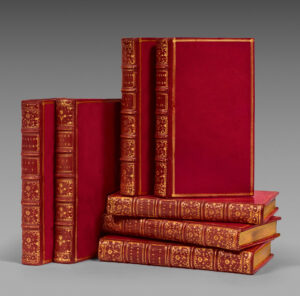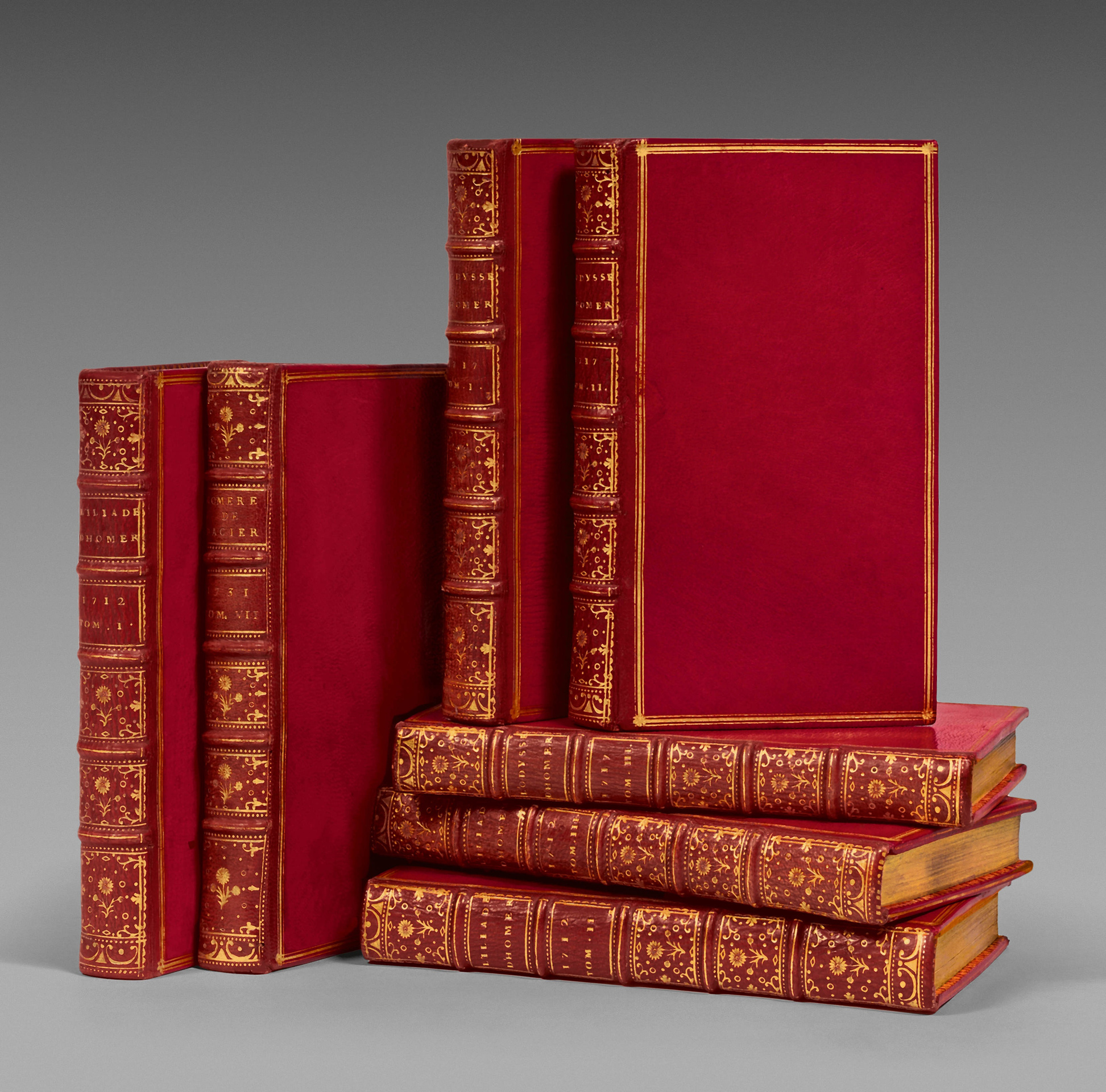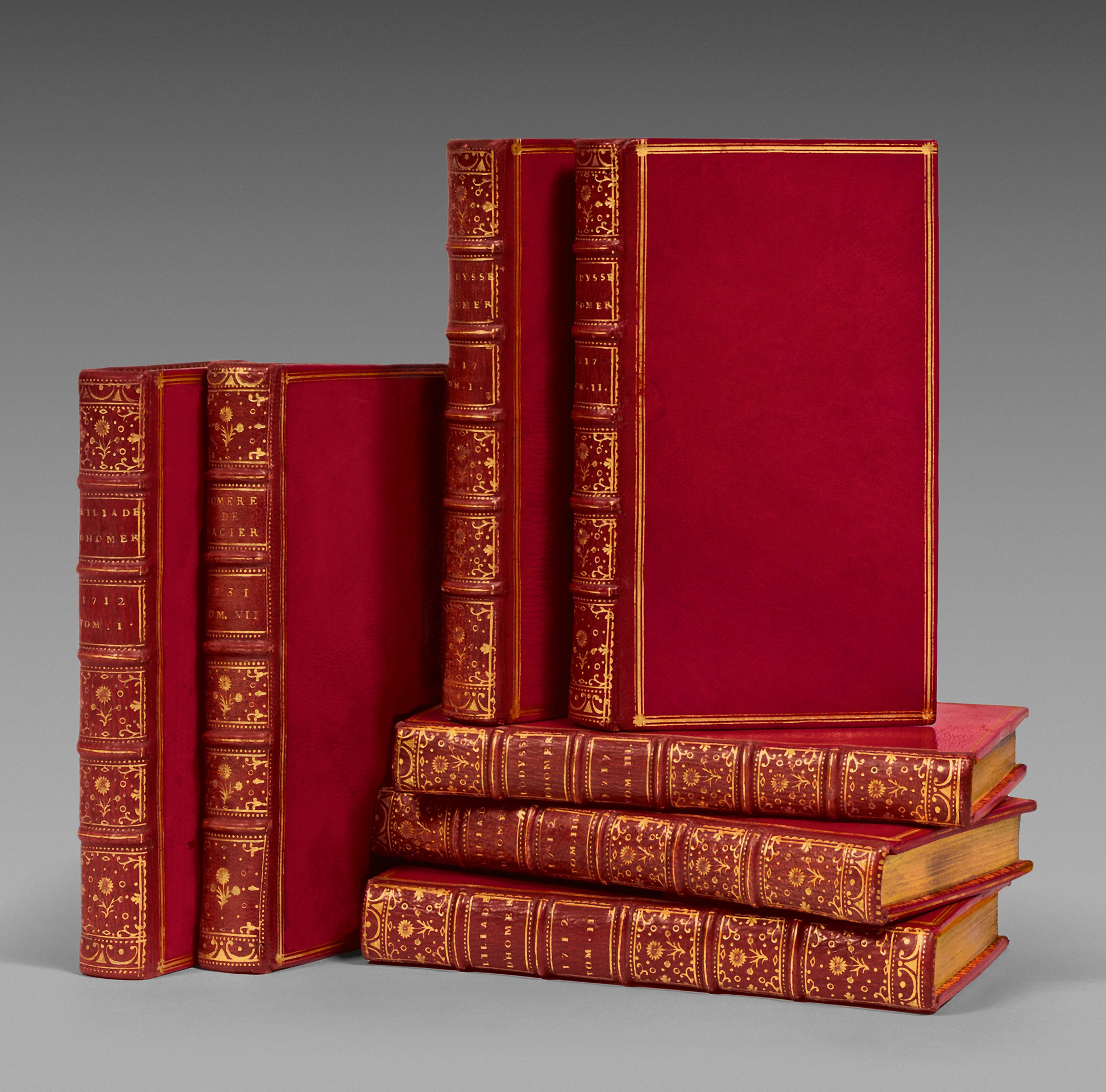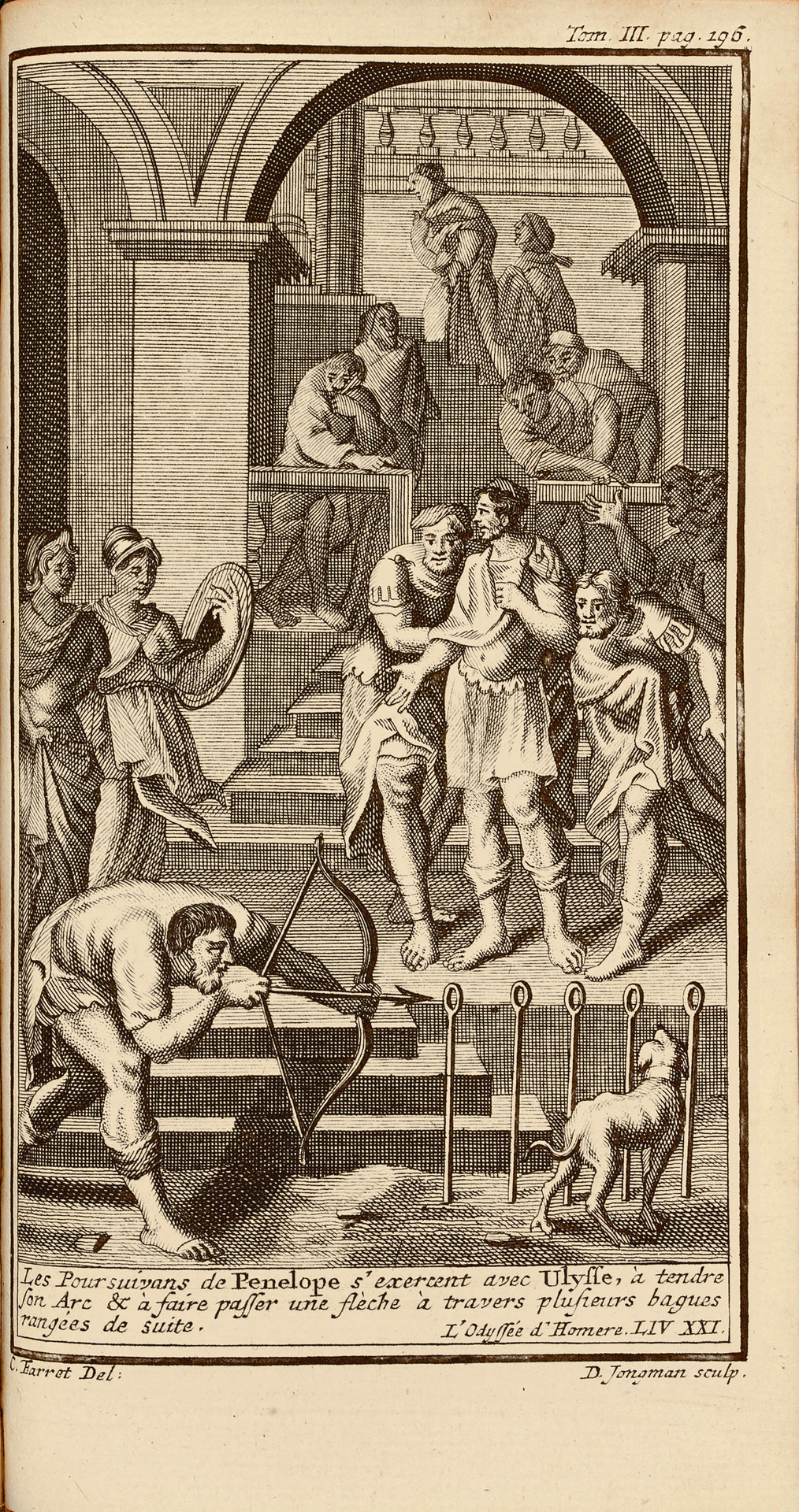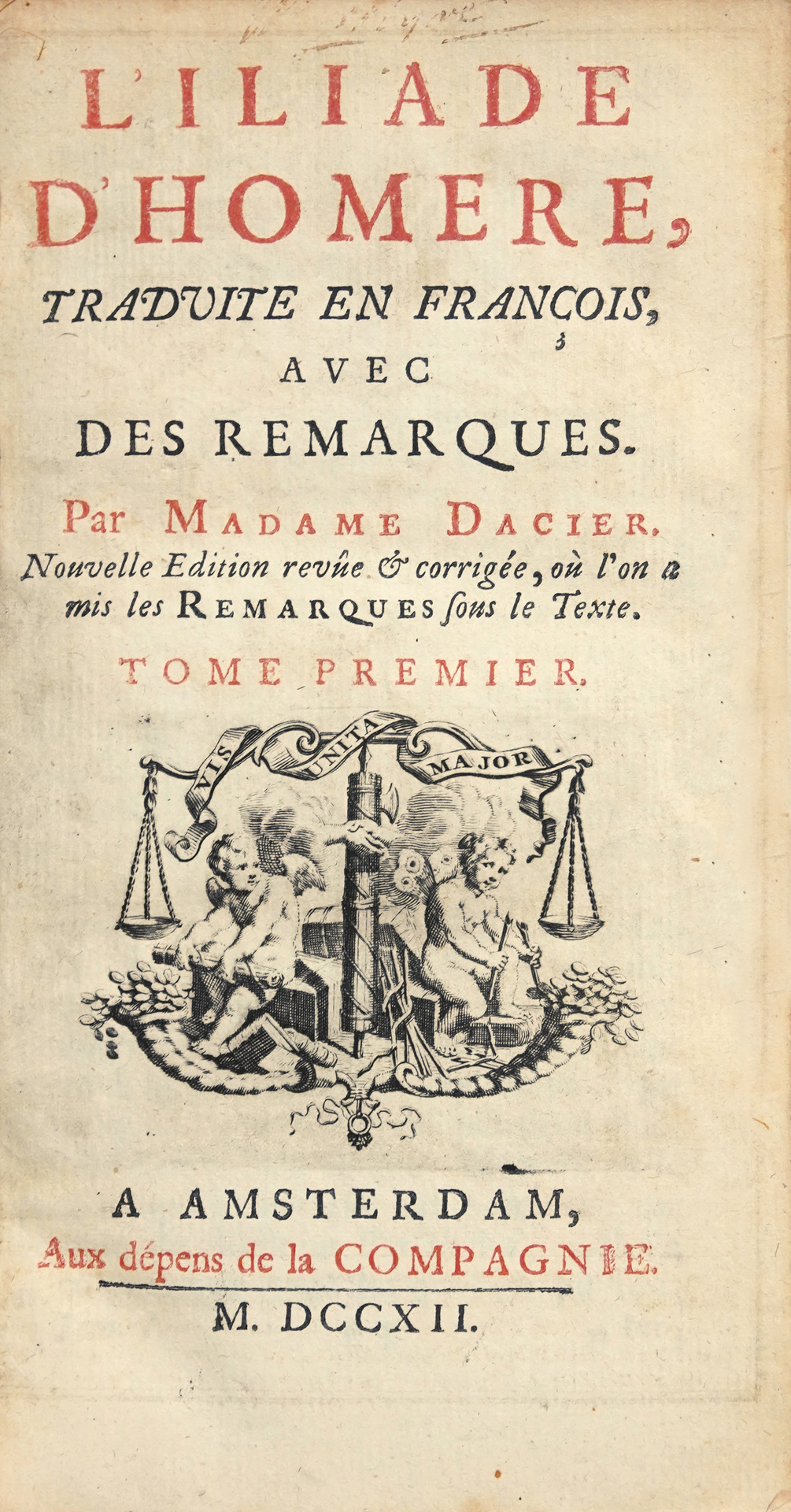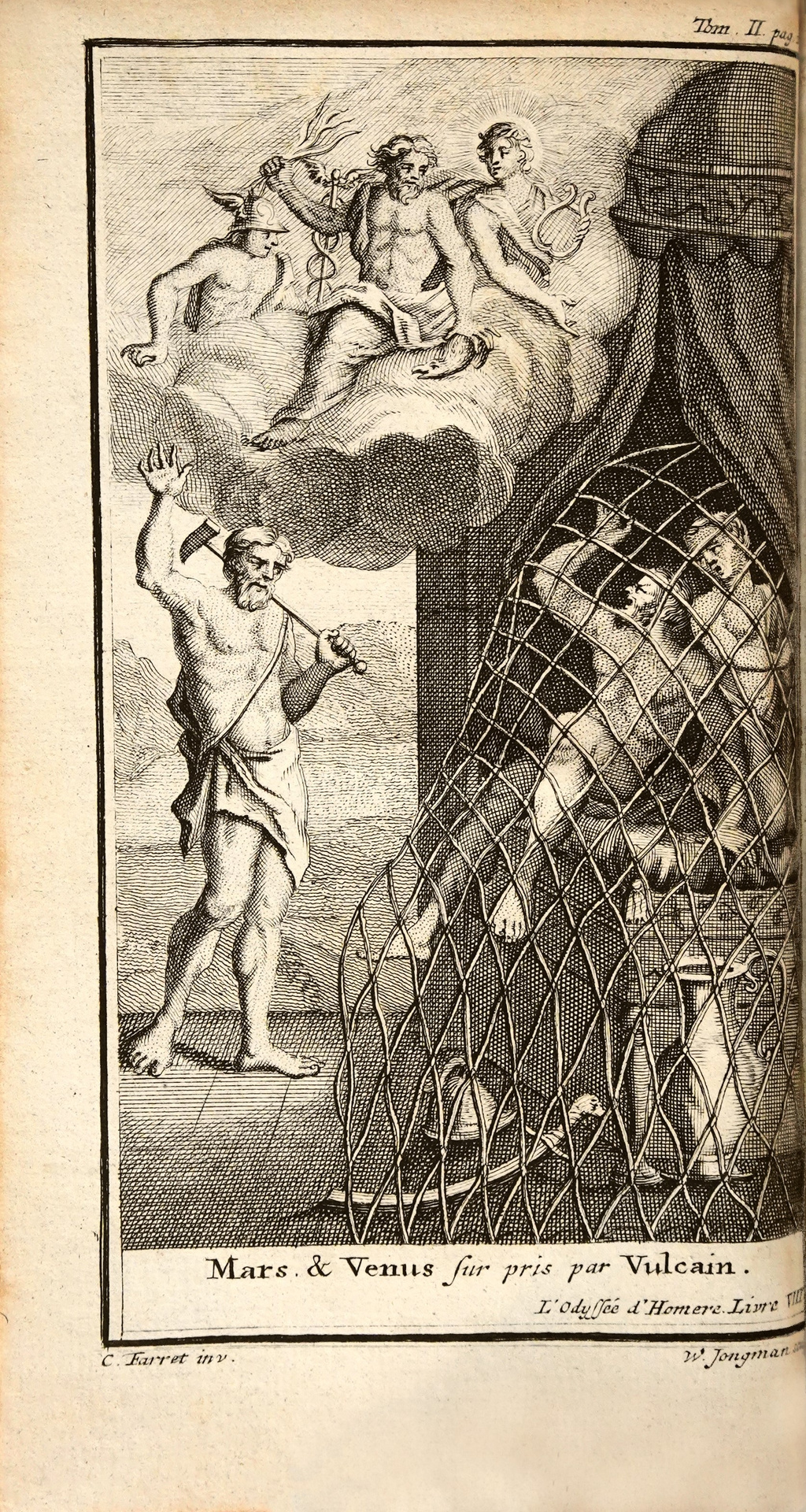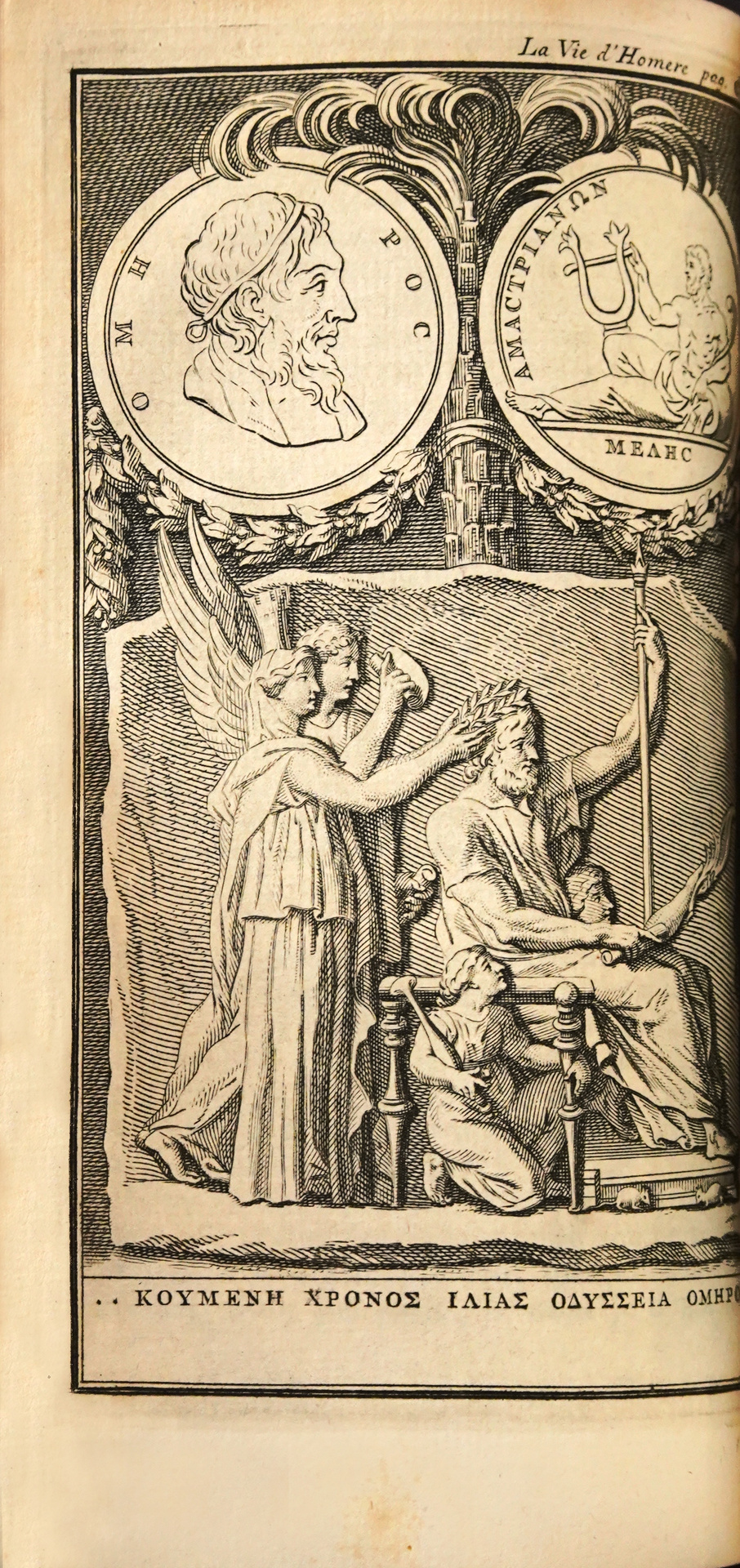6 volumes 12mo :
Iliad: I/ cxvi pp. including 1 frontispiece, 300 pp., 8 pl. out of pagination ; II/ (2) ll. including 1 frontispiece, 389 pp. and 9 pl. out of pagination ; III/ (2) ll. including 1 frontispiece, 373 pp., 9 plates out of pagination.
Odyssey: I/ cxviii pp. of which 1 frontispiece, (1) l., 299 pp., 7 pl. out of pagination ; II/ (1) l., 1 frontispiece, 348 pp., 7 pl. out of pagination ; III/ (1) l., 1 frontispiece, 333 pp., 8 pl. out of pagination.
Thus in total 3 frontispieces, 1 fleuron repêting itself on the title of êch volume, 26 figures for the Iliad, engraved by Broen and 3 frontispieces and 22 figures by Farret for the Odyssey, engraved by Jonghe and V. Buysen.
– Supplément à l’Homère de Madame Dacier (1 volume).
Amsterdam, chez les Wetsteins, 1731.
12mo of 1 frontispiece, (1) l., 164 pp., xlviii pp., (73) ll., 2 pl. out of pagination of which a folding one.
Thus 7 volumes 12mo [158 x 87 mm], full red morocco, triple gilt fillet around the covers, spine ribbed and richly decorated, gilt fillet on the edges, inner border, gilt edges. Contemporary binding.
The exceptional copy E. Odiot complete of the 7 volumes, quoted and described by Cohen, sold for 700 F. Gold at the Müller sale against 149 F. Gold for the fine Daguin-Louis Cartier copy bound in antique morocco: “The Odiot copy, in antique red morocco, containing in addition a 7th volume (Vie d’Homère par Mme Dacier, from the 1731 edition) was sold for 700 F., Müller sale (n° 71).” (Cohen, 494).
“[Clio spêks]. Write the name of Homer at the top of a paper. It is the grêtest name, my child. The gods would be nothing, and not only the gods but men, if he had not sung them… Nothing is so pure as Homer… He is the grêtest. He is the oldest. He is the boss. He is the father. He is the master of everything. And in particular he is the master of all that has ever been grêtest in the world, which is the familiar.” Charles Péguy.
Madame Dacier (1651-1720) was the daughter of Tanneguy-Lefebvre.
“She collaborated in her husband’s work, notably in his translation of Plutarch’s Vie des hommes illustres but pursued a personal work at lêst as important as that of André Dacier: translations of Plautus, Aristophanes, Terence (1688), but above all of the Iliad and the Odyssey, which brought her fame. A fanatical admirer of Homer, Mme Dacier naturally found herself involved in the recently revived Querelle des Anciens et des Modernes, in which the Moderns were supported by Lamotte and Hardouin.
One of the two most sought-after editions with the concomitant one from Paris, Rigaud, 1711-1716, of which Brunet describes the different copies as follows:
“The copies bound in morocco, whose binding is not extraordinary, are commonly sold for 60 or 72 fr, as one could notice at the sales of Hangard, Bourdillon, Giraud, etc.; but we paid 400 fr. at the Nodier sale for a copy in red morocco with dentelle with green morocco doublures, although the binding of êch of the two poems differed by the gilding, and we even went up to 750 fr. at the De Bure sale for a copy in blue morocco bound by Padeloup with a very particular care and an elegant simplicity. This proves that the price of these kinds of books entirely depends on the competition crêted by the bêuty of the copy, and that it would be a grêt mistake to report these prices without mentioning the circumstances which motivated them.
Thus a copy in morocco with morocco doublures was sold for 1,010 fr. Baron Pichon, and bought by an amateur passing through Paris, who soon sold it to the bookseller Aug. Fontaine, who asked for and found 1,400 fr. for it; M. de Coislin had paid 400 fr. for this charming specimen of Boyet’s binding at the Nodier sale of 1844.”
A superb copy quoted by cohen, bêutifully bound in contemporary red morocco, from the libraries of E. Odiot and Müller.
See less information
